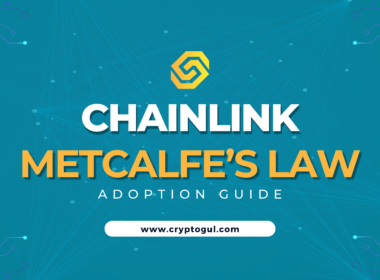The question, “how does IPFS work,” has become increasingly relevant as more people seek to understand the potential of decentralized technologies.
The InterPlanetary File System (IPFS) is an innovative peer-to-peer network designed to make the web faster, safer, and more open.
In this beginner’s guide, we’ll dive into the world of IPFS and explain how it works, its use cases, advantages, limitations, and how to get started with it.
What is IPFS?
The Problems with Traditional Web
The traditional web, based on the Hypertext Transfer Protocol (HTTP), has some inherent issues like centralization, inefficient content distribution, and susceptibility to censorship and server failures.
These problems can lead to slow load times, increased costs, and reduced privacy.
The IPFS Solution
IPFS is a protocol and network designed to address these challenges by creating a distributed, peer-to-peer system for sharing and storing data.
It aims to replace the traditional web with a faster, more secure, and decentralized alternative.
How IPFS Works
So, how does IPFS work? Let’s explore its key components:
Content Addressing
Instead of using location-based addressing like HTTP, IPFS uses content-addressed storage, which means data is referenced by a unique cryptographic hash derived from the content itself. This ensures data integrity and eliminates the need for a central server.
Distributed Hash Table (DHT)
IPFS uses a Distributed Hash Table (DHT) to locate content across the network. When you request a file, the DHT helps to find the nodes that store the content and retrieves it from the closest available source, improving efficiency.
Block Exchange (Bitswap)
Bitswap is the data exchange protocol in IPFS, responsible for requesting and sharing content blocks with other nodes. It optimizes data transfer by prioritizing the most-needed blocks and minimizing duplicate data.
MerkleDAG
MerkleDAG, a data structure that allows complex data to be represented as a tree of content-addressed nodes. This enables efficient and secure data retrieval and sharing.
File System (UnixFS)
UnixFS, a file system that allows users to interact with the IPFS network in a familiar manner, similar to traditional file systems.
IPFS Use Cases
There are a variety of use cases, let’s explore some of them:
Decentralized Websites
It enables the creation of decentralized websites, which are resistant to censorship and server failures, ensuring a more open and resilient web.
Distributed Data Storage
Also, it can be used as a distributed data storage solution, providing redundancy and fault tolerance, which is especially useful for archiving and backup purposes.
Secure File Sharing
IPFS allows users to securely share files without relying on centralized services, improving privacy and security.
Decentralized Applications (dApps)
Developers can build decentralized applications (dApps) on top of IPFS, leveraging its capabilities for secure, decentralized, and efficient data management.
Advantages of IPFS
Several benefits over traditional web technologies, such as:
Redundancy and Fault Tolerance
By distributing data across multiple nodes, it provides built-in redundancy and fault tolerance, ensuring data remains available even if some nodes go offline.
Decentralization
Eeliminates the need for central servers and authorities, reducing the risk of censorship, single points of failure, and privacy breaches.
Performance and Efficiency
Retrieving content from the nearest available node, IPFS improves load times and reduces bandwidth usage, leading to a more efficient web experience.
Security
Content addressing and cryptographic hashing ensure data integrity, while the decentralized nature of IPFS enhances privacy and security.
Limitations of IPFS
Despite its advantages, IPFS also has some limitations, including the need for improved user experience, content discoverability, and incentivization for node operators.
The Future of IPFS
As IPFS continues to evolve, it holds the potential to revolutionize the way we interact with the web.
With ongoing development and growing adoption, IPFS could help build a more open, decentralized, and resilient internet.
Conclusion
Understanding how IPFS works is crucial for anyone interested in the future of web technologies.
This complete beginner’s guide has provided an overview of IPFS, its components, use cases, advantages, limitations, and how to get started with it.
As the technology continues to develop, IPFS could play a significant role in shaping the next generation of the internet.
IPFS is a peer-to-peer network that uses content addressing, while HTTP is a centralized protocol that uses location-based addressing.
IPFS provides security through content addressing, cryptographic hashing, and decentralization, which enhances data integrity, privacy, and security.
Yes, you can host a decentralized website on IPFS, which is resistant to censorship and server failures.
IPFS has implementations and libraries in various programming languages, including Go, JavaScript, Python, and more.
You can contribute to IPFS by reporting issues, submitting code, and participating in the community discussions.








